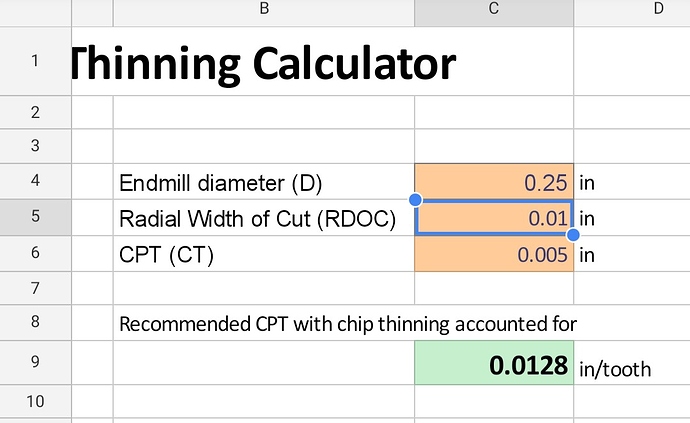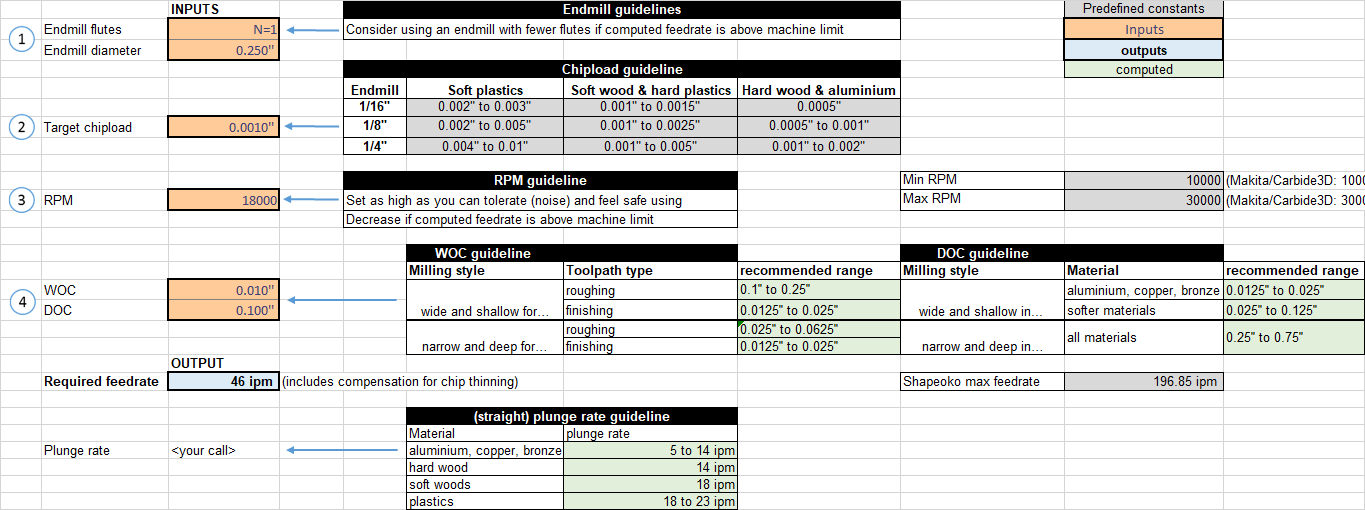I’m still working through an adaptive recipe and recall writing down @wmoy suggesting a recipe in 6061 Al for adapative tool paths with Single Flute endmill at 18k RPM, 50 IPM , .25" DOC and Opt. Load of .01" and that the IPT is .001…problem is no matter how I do the math…the IPT is higher at that feed rate? What am I’m missing in my calculations that comes to a IPT of .001 and not something more like .0025? That accounts for chip thinning as best as I can tell.
Edit: sorry this is just an example, need to input the CPT of your usecase
Edit: check out @gmack’s calculator too
Lol so my equation is correct…the magic number is Chip Thickness and thats where I’m stuck… I guess the max chip thickness is assumed to be tiny like .0004 to get to the magic IPT of .001 … which is what I kept coming up with but it seemed to small
Here’s a different way to look at it using my F&S basic spreadsheet:
For a single flute at 18k, with a WOC of 0.01", to reach an actual/effective chipload of 0.001" during the cut, one must feed at about 50 ipm (46ipm to be precise).
50ipm at 18k on a 1-flute grants a theoretical chipload of 46 / (1x18000) = 0.00255" at 50% WOC. But taking chip thinning into account, and given the 0.01" WOC, that 0.0025" chipload becomes a 0.001" chip thickness. Hence Winston’s statement in the video.
Ok thanks. I think I now know where my assumptions were going wrong about chip thickness and what the baseline is for thinning. I appreciate it
Hey! Nice to see my little calculator is getting some good use.
This topic was automatically closed after 30 days. New replies are no longer allowed.

